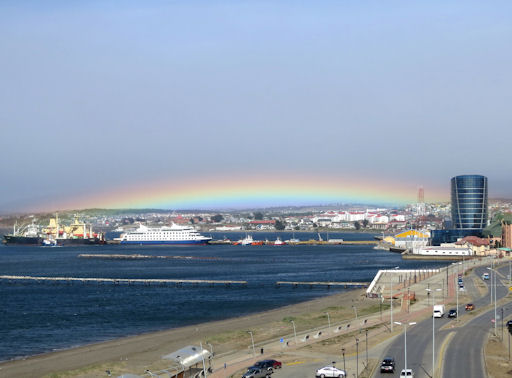QUIET SUN: With no sunspots actively flaring, the sun's X-ray output has nearly flatlined. Solar activity remains low, and no strong flares are expected today. Solar flare alerts: text, voice.
AMAZING ICE HALO DISPLAY: Yesterday, sky watchers around the Marshall Space Flight Center in Huntsville, Alabama, witnessed something amazing: A complex network of luminous arcs and rings surrounded the afternoon sun. "I've never seen anything quite like it," says eyewitness Bill Cooke, head of NASA's Meteoroid Environment Office. Solar physicist David Hathaway snapped this picture of the display:

Image credit and copyright: David Hathaway/NASA/MSFC
The apparition might be connected to hurricane Sandy. The core of the storm swept well north of Alabama, but Sandy's outer bands did pass over the area, apparently leaving behind a thin haze of ice crystals in cirrus clouds. Sunlight shining through the crystals produced an unusually rich variety of ice halos.
"By my count, there are two sun dogs, a 22o halo, a parahelic circle, an upper tangent arc, and a parry arc," says Chris Brightwell, who also photographed the display. "It was amazing."
"Very impressive," agreed onlooker Kyle Winkleman. "This was a once-in-a-decade event for our area."
If the display really was a result of Sandy, sky watchers might not have to wait a decade for the next show. Some researchers believe that superstorms will become more common in the years ahead as a result of climate change, creating new things both terrible and beautiful to see overhead. Sky watchers in the storm zone should remain alert for the unusual.
Realtime Space Weather Photo Gallery
GROUND-HUGGING RAINBOW: Most rainbows arch up into the sky, but on Oct. 27th, Stefan Elieff of Punta Arenas, Chile, photographed one that seemed to hug the ground:
"Scattered rain clouds were rolling in low over the hills behind the city when this unusually low rainbow appeared," says Elieff.
Although low rainbows are seldom seen, they are actually quite common. They appear whenever raindrops are illuminated by a high-hanging sun. "A rainbow's center and the sun are always on opposite sides of the sky," explains atmospheric optics expert Les Cowley. "So when the sun is high, the rainbow is low. Indeed, as the sun climbs, the rainbow sinks--sometimes right into the sea."

![]()
Solar wind
speed: 280.4 km/sec
density: 1.9 protons/cm3
explanation | more data
Updated: Today at 1237 UT
![]()
X-ray Solar Flares
6-hr max: C1 1139 UT Oct31
24-hr: C1 0507 UT Oct31
explanation | more data
Updated: Today at: 1200 UT
![]()
![]()
![]()
Daily Sun: 31 Oct 12
![]()
![]()
None of these sunspots is actively flaring. Solar activity is low. Credit: SDO/HMI
![]()
![]()
![]()
Sunspot number: 56
What is the sunspot number?
Updated 30 Oct 2012
Spotless Days
Current Stretch: 0 days
2012 total: 0 days (0%)
2011 total: 2 days (<1%)
2010 total: 51 days (14%)
2009 total: 260 days (71%)
Since 2004: 821 days
Typical Solar Min: 486 days
Update 30 Oct 2012
The Radio Sun
10.7 cm flux: 108 sfu
explanation | more data
Updated 30 Oct 2012
![]()
![]()
![]()
Current Auroral Oval:
![]()
Switch to: Europe, USA, New Zealand, Antarctica
Credit: NOAA/POES
![]()
![]()
![]()
Planetary K-index
Now: Kp= 0 quiet
24-hr max: Kp= 0 quiet
explanation | more data
![]()
Interplanetary Mag. Field
Btotal: 4.8 nT
Bz: 1.8 nT south
explanation | more data
Updated: Today at 1237 UT
![]()
![]()
![]()
Coronal Holes: 30 Oct 12
![]()
![]()
A minor solar wind stream flowing from the indicated coronal hole should reach Earth on Nov. 3-4. Credit: SDO/AIA.






Comments
WOW
Amazing!
same type of rainbow in 2011
http://youtu.be/-gb-k7If5lM